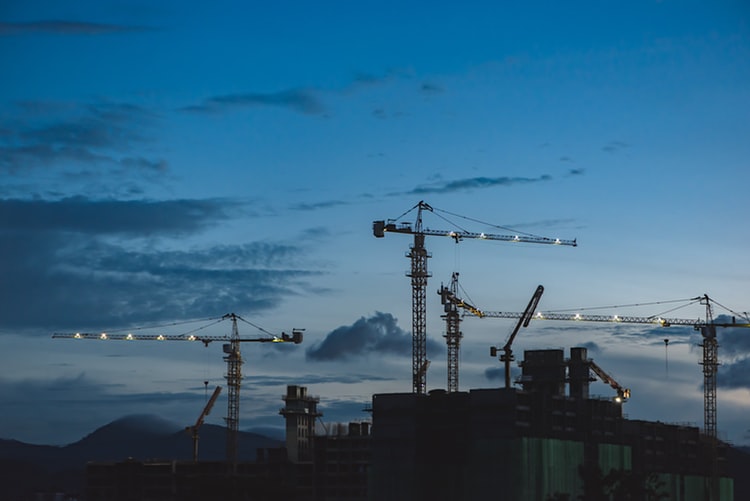
Writing in FutuREstorative back in 2016, I looked at what a construction project would look like in response to the Living Building Challenge‘s “what if every act of construction made the world a better place” …
- Projects would be net positive in all aspects, on place, nature, water, health, even knowledge and of course carbon.
- Construction projects are carbon-positive: Strict carbon planning and management is key. Remaining carbon emissions after all carbon management improvements have been made are addressed with restorative offset programmes.
FutuREstorative drew on a Total Carbon Study from the Integral Group, DPR Construction and others that looked at the carbon profile through the life of a refurbishment project (DPR’s Construction San Francisco Office) and reported a number of key findings:
- For new buildings, it is critical to focus on reducing embodied emissions;
- For existing buildings we need to focus on reducing operating emissions.
- The largest reductions came from the use of high-mass and energy- intensive materials.
- Carbon and Construction carbons are not understood.
Lloyd Alter writing in Treehugger established Upfront Carbon as a key concept term in addressing the ‘Climate Emergency’. ‘Embodied carbon is not a difficult concept at all, it is just a misleading term … I have concluded that it should be Upfront Carbon Emissions, or UCE”. (By the way, Lloyds article Let’s rename “Embodied Carbon” to “Upfront Carbon Emissions” is a must read that also illustrates how twitter conversations, with Elrond Burrell, can lead to improved industry thinking)
ARRO: a project carbon hierarchy
To achieve a positive carbon project, focusing on the essential upfront carbons,. FutuREstorative proposed a robust carbon hierarchy approach. As the waste hierarchy of ‘recycle, reuse, dispose‘ has become part of our construction waste lexicon so ARRO – Avoid, Replace, Reduce and Offset.should become part of the carbon lexicon

Avoid: carbon through regenerative low carbon design, construction planning and sustainable facilities management …
Replace: high carbon techniques and activities with low carbon, regenerative solutions…
Reduce: seek to reduce carbon through local material and supplier procurement and a focus on construction travel and transport, carbon productivity and construction efficiency …
Offset emissions that cannot be managed out. But be aware you cannot offset the toxic greenhouse gas emissions eg NOX from use of diesel plant and transport.
It is worth noting that the RIBA 2030 Challenge calls for a reduction in embodied (upfront carbon) … rising incrementally from 50 in 2020 to 75% over the next decade before offsetting become acceptable
Asked recently at the end of a keynote zero carbon talk for three actions that we should be doing today, I responded with firstly to Take Back, secondly to Stop and thirdly to Think like a Tree. Admitedly, his was on the spot thinking, but based on a decade or so of engagement with sustainability thinkers, researchers, scientists, practitioners, it makes the basis for a good strategy
Take Back – On our watch , over the last 30 years , of urging sustainable construction, carbon in the atmosphere has increased from 320 to 415ppm. And we in the built environment are responsible for 40% of that increase. To get back to the science based safe target of 350 we need to be taking carbon out of the atmosphere. Therefore, the most responsible thing we can do is to design and construct buildings that are carbon sinks. Buildings that lock carbon away.
Stop – or at least severely reduce putting pollutants and carbon, into the atmosphere.
Think Like a Tree – carbon is an essential building block within nature. We need to rethink and understand carbon cycles, acknowledge that carbon is not the enemy. We need a better construction carbon and eco – literacy so we fully understand carbon as a natural currency cycle, evaluating carbon efficiency (carbon productivity) as we do financial efficiency.
Once we see carbon as a ‘currency’ then we can understand carbon productivity – how much value of building are we delivering for each unit of carbon emitted. This should become the KPI for projects, alongside or even replacing the measure of productivity in labour terms. It is one of the most simple of KPI’s., or could be, construction cost divided by upfront carbon. We tightly monitor and measure construction value, and we measure construction carbon, albeit unevenly.
In conclusion then …
An ABC for (Net) Zero Carbon Construction
Adopt a carbon strategy: of take back, of stopping emissions and of rethinking carbon as natural cycles,
Build robust carbon ARRO hierarchy strategies that Avoid, Reduce and Repair and Offset into every project
Carbon productivity monitored as a core KPI, with strong carbon leadership and literacy, that matches the level of focus we have on financial and safety performance within the industry
Next: Part 3 – Just What is Construction Carbon and Ecological Literacy
Image Source: Unsplash, EJ Yao
